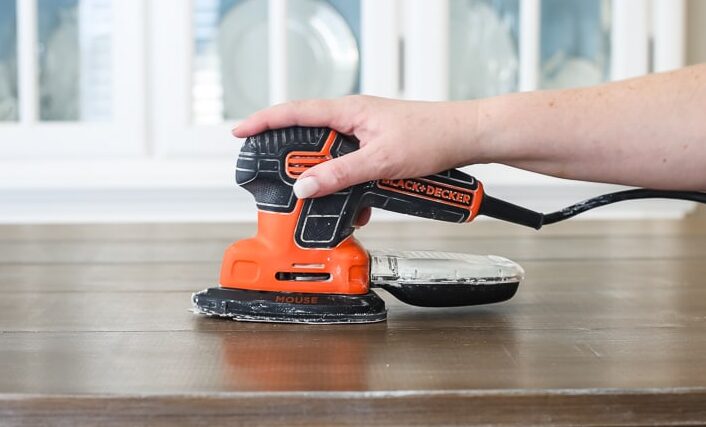Contents
Introduction
When it comes to refinishing, restoring, or building furniture, the right tools make all the difference. One of the essential tools for achieving a smooth, professional finish is a sander. But with so many models on the market, choosing the best sander for furniture can be overwhelming.
In this article, we’ll dive deep into the types of sanders, what to look for when buying, top recommendations, and tips to help you select the ideal tool for your next furniture project. Whether you’re a DIY enthusiast or a seasoned woodworker, having the best sander for furniture is key to achieving stunning results.
Why You Need the Best Sander for Furniture
Sanding furniture is not just about smoothing out imperfections—it’s about preparing the surface to accept paint, stain, or sealant evenly. A poor sanding job can ruin the finish, no matter how good your painting or staining skills are. That’s why investing in the best sander for furniture is critical.
A quality sander saves time, reduces manual effort, and gives you consistent results. It also protects delicate furniture pieces from accidental damage that can occur with low-quality or inappropriate sanders.
Types of Sanders for Furniture
Before you buy, it’s essential to understand the different types of sanders available:
1. Orbital Sanders
Orbital sanders move in small circular motions, making them great for fine finishing work. They are lightweight, easy to control, and ideal for sanding between coats of paint or varnish.
2. Random Orbital Sanders
A step up from standard orbital sanders, random orbital models combine circular and orbital motions to prevent swirl marks. They are among the top choices for those seeking the best sander for furniture because they balance power and finesse.
3. Detail Sanders
Detail sanders have a pointed tip, allowing them to reach tight corners and intricate carvings on furniture. If you work with ornate or antique pieces, a detail sander is an excellent companion.
4. Belt Sanders
Belt sanders are more aggressive and are used for rapid material removal. They are better suited for large, flat surfaces rather than detailed work.
5. Sheet Sanders
Sheet sanders use square pads and are a good choice for basic sanding tasks, although they may leave visible marks if not used carefully.
Features to Consider When Choosing the Best Sander for Furniture
Not all sanders are created equal. Here are key factors to keep in mind:
-
Speed Control: Variable speed settings allow for greater control over delicate or tough surfaces.
-
Dust Collection: A built-in dust bag or port for a vacuum attachment minimizes mess and keeps your work area clean.
-
Weight and Ergonomics: Look for lightweight models with comfortable grips to reduce hand fatigue.
-
Power: A motor with sufficient power ensures smooth, even sanding without stalling.
-
Pad Size and Shape: Smaller pads are better for detail work; larger ones cover more area quickly.
-
Durability: A well-built machine lasts longer and provides more consistent performance.
Top Picks for the Best Sander for Furniture
1. DEWALT DWE6423K Random Orbit Sander
This popular choice features a 3.0-amp motor, variable speed control, and an excellent dust collection system. It’s a reliable, versatile sander that’s particularly good for furniture refinishing.
Pros:
-
Powerful and adjustable speed
-
Minimal vibration for comfort
-
Effective dust collection
Cons:
-
Slightly bulky for very tight spaces
2. Bosch ROS20VSC Palm Sander
Known for precision and smooth operation, the Bosch ROS20VSC is a favorite among furniture makers. It features a microfilter system that captures fine dust particles and a pad dampening system to reduce swirl marks.
Pros:
-
Excellent dust control
-
Comfortable grip
-
Great for delicate surfaces
Cons:
-
Dust canister is small
3. BLACK+DECKER Mouse Detail Sander (BDEMS600)
If you work with intricate furniture pieces, this detail sander is perfect. The compact design gets into corners and tight spaces easily, and it’s very lightweight.
Pros:
-
Compact and maneuverable
-
Affordable price point
-
Multiple attachments for versatility
Cons:
-
Not ideal for large surfaces
4. Makita BO5041K Random Orbit Sander
With a large two-finger trigger switch and adjustable front handle, the Makita BO5041K makes sanding furniture easy and comfortable. It also offers high power and multiple speed settings for different furniture types.
Pros:
-
Adjustable handle for better reach
-
High power output
-
Durable construction
Cons:
-
Higher price range
5. PORTER-CABLE 382 Random Orbital Sander
If you’re on a budget but still want quality, the PORTER-CABLE 382 is a reliable pick. It offers consistent performance and a dual-plane counter-balanced fan for reduced fatigue.
Pros:
-
Good value for money
-
Sturdy build
-
Easy to use
Cons:
-
Less advanced dust collection compared to pricier models
Tips for Using a Sander on Furniture
-
Always Start with a Coarser Grit: Begin with a 60- or 80-grit sandpaper to remove old finishes, then gradually move to finer grits for a smooth finish.
-
Sand with the Grain: Always move your sander in the direction of the wood grain to avoid scratches.
-
Use Light Pressure: Let the sander do the work. Pressing too hard can cause gouges and uneven surfaces.
-
Keep the Sander Moving: Holding the sander in one place for too long can lead to uneven sanding or depressions in the wood.
Frequently Asked Questions (FAQs)
What is the best sander for furniture refinishing?
The best sander for furniture refinishing is typically a random orbital sander like the DEWALT DWE6423K or Bosch ROS20VSC. They offer a balance of power and precision without leaving swirl marks.
Can I use a belt sander for furniture?
While a belt sander can be used for large flat surfaces like tabletops, it is generally too aggressive for most detailed furniture work. A random orbital or detail sander is better suited for finer control.
How important is dust collection in a furniture sander?
Dust collection is very important. It keeps the work area clean, improves visibility, protects your health, and prevents dust from settling into the wood grain, which can affect the finish.
Should I buy a detail sander for furniture work?
If you frequently work on furniture with intricate carvings, corners, or tight spaces, a detail sander like the BLACK+DECKER Mouse is a great investment.
How much should I spend on the best sander for furniture?
Good sanders range between $50 and $150. Investing in a quality model will save you time, effort, and money in the long run.
What grit sandpaper should I use on furniture?
Start with 60-80 grit for heavy material removal, then move to 120-150 grit for smoothing, and finish with 220 grit for fine sanding before painting or staining.
Conclusion
Choosing the best sander for furniture is crucial for achieving a smooth, beautiful finish that lasts. Whether you need a detail sander for intricate projects or a random orbital sander for large surfaces, investing in the right tool can dramatically improve your woodworking results.
By considering your specific project needs and evaluating features like dust collection, variable speed, and ergonomics, you’ll be well on your way to picking a sander that serves you for years to come. Happy sanding!






